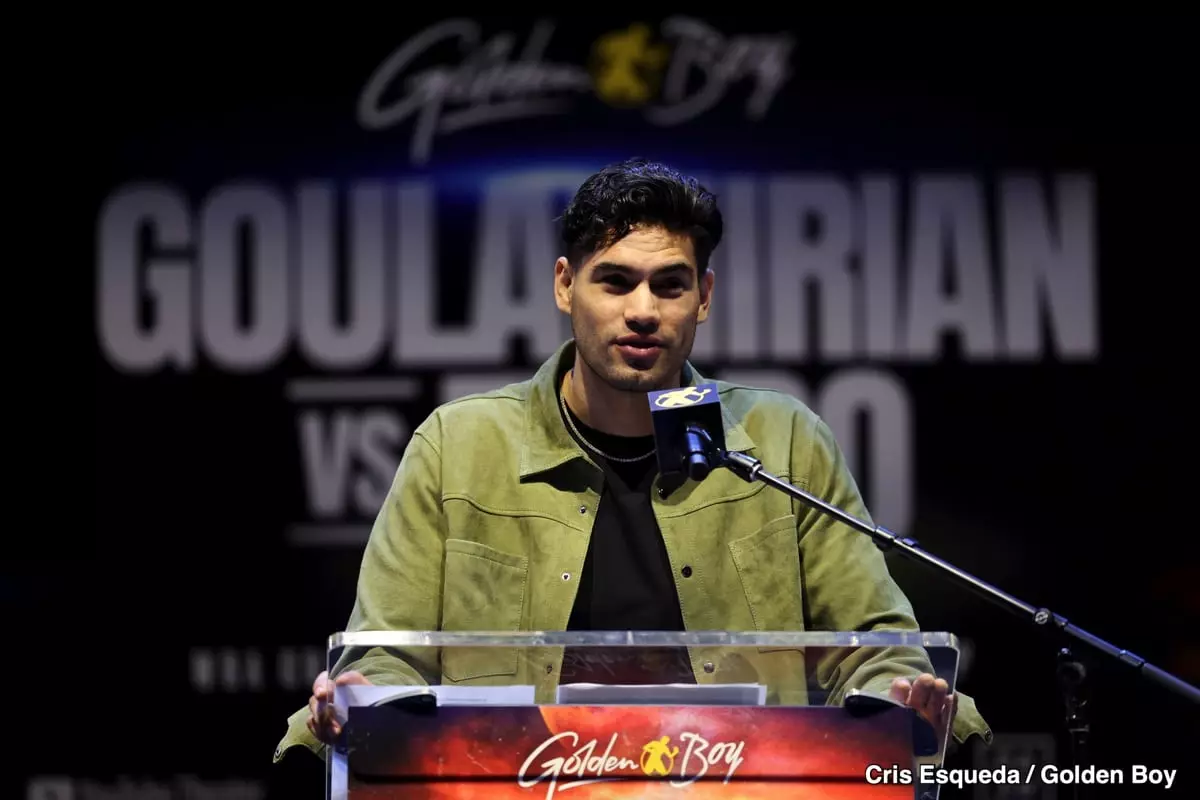In the world of professional boxing, where weight classes often dictate the trajectory of a fighter’s career, the upcoming matchup between WBA cruiserweight champion Gilberto ‘Zurdo’ Ramirez and WBO champion Chris Billiam-Smith is sparking discussions not only about their immediate contest but also about potential future outcomes in the division. Fight fans eagerly anticipate the clash on November 16th in Riyadh, Saudi Arabia, but there are underlying narratives at play that extend far beyond this one event.
Ramirez (46-1, 30 KOs) has made it clear that he is looking beyond Billiam-Smith (20-1, 13 KOs) and is arguably focused on a high-stakes bout against former undisputed cruiserweight champion Oleksandr Usyk, should Usyk decide to return to the cruiserweight ranks in 2025. While Ramirez is eager for this lucrative opportunity that could enhance both his career and financial standing, Usyk’s statements suggest a firm intention to stay at heavyweight, chasing bigger fights. This highlights a critical aspect of boxing strategy—navigating potential matchups while focusing on present opponents.
Though Ramirez’s pedigree is impressive, one should not overlook Billiam-Smith. He enters this fight with a solid resume of his own and the determination to prove his worth in the ring. Analysts like Chris Mannix have emphasized that Ramirez’s recent victory over long-reigning champion Arsen Goulamirian marks an important chapter in his career, building momentum into this unification bout. Billiam-Smith’s tactical approach and fighting style, which may not match Ramirez’s size, suggest a battle of strategy and adaptability rather than sheer physical dominance.
The battle is expected to be a tactical affair, where primacy will likely shift towards effective striking rather than movement. Sergio Mora pointed out that Ramirez, traditionally viewed as flat-footed coming up from lower weight classes, has made strides in improving his footwork, focusing on angles and tactical movements. However, the effectiveness of this new strategy against an adaptable fighter like Billiam-Smith remains questionable. Billiam-Smith, not a heavyweight himself but competitive, will find ways to exploit potential openings in Ramirez’s newly adopted style, making it crucial for Ramirez to not only rely on movement but also on solid punching power.
Oscar De La Hoya’s insights about Ramirez’s previous fights reveal how his tactical evolution has come into play. Yet, contrasting this growth with Billiam-Smith’s capabilities raises pertinent questions. Can Ramirez maintain his new defensive approach when faced with an opponent who doesn’t easily succumb to being outmaneuvered? If the bout transitions into a prolonged boxing match relying solely on tactical decisions, there is a genuine threat that Ramirez may struggle against Billiam-Smith’s more direct approach.
The outcome of this fight will have significant repercussions for both Ramirez and Billiam-Smith. A victory for Ramirez could solidify his position as a leading figure in the cruiserweight division, potentially paving his way towards a heavyweight future if Usyk’s plans remain uncertain. However, a loss would lead to serious questions about his adaptability and long-term viability in the division, effectively nullifying his ambitions.
Conversely, should Billiam-Smith pull off an upset, it would not only snatch the unification titles from Ramirez but also elevate his status in the boxing hierarchy, opening avenues for high-profile matchups against other contenders or champions.
The November 16th clash is more than just a title bout; it encapsulates the delicate dance of strategy, ambition, and the ever-changing narratives that define professional boxing. As both fighters prepare for this pivotal showdown, fans are left to ponder not just the immediate impact, but what the aftermath will mean for the cruiserweight division’s landscape.

